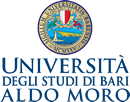SEXUAL DIMORPHISM IN THE FIRST- AND SECOND-NYMPHAL INSTARS OF QUADRASPIDIOTUS ZONATUS (FRAUENFELD) (HEMIPTERA: COCCINEA: DIASPIDIDAE)
DOI:
https://doi.org/10.15162/0425-1016/823Abstract
SEXUAL DIMORPHISM IN THE FIRST- AND SECOND-NYMPHAL INSTARS OF QUADRASPIDIOTUS ZONATUS (FRAUENFELD) (HEMIPTERA: COCCINEA: DIASPIDIDAE).
Morphological characters separating male and female 1st- and 2nd-instar nymphs of Quadraspidiotus zonatus are discussed. In the 1st instar, male nymphs possess a campaniform sensillum on each tarsus and dorsal submedian setae on the 1st abdominal segment; these characters are absent on the female. There is also a slight difference in the body shape.
In the 2nd-instar nymphs, the differences are greater. In the male nymph, the number of glandular ducts is much greater than in the female and there is a pair of setae present on the 1st abdominal segment and three pairs of ventral submedian setae on the head (absent on the female). There is also a greater difference in body shape than in the 1st-instar nymphs.
Key words: macroducts, setal distribution, Aspidiotini, scale cover.







